In 1870, the first major American expedition into the Yellowstone revealed an extraordinary wilderness, which became a national park 150 years ago.
-
Spring 2022
Volume67Issue2
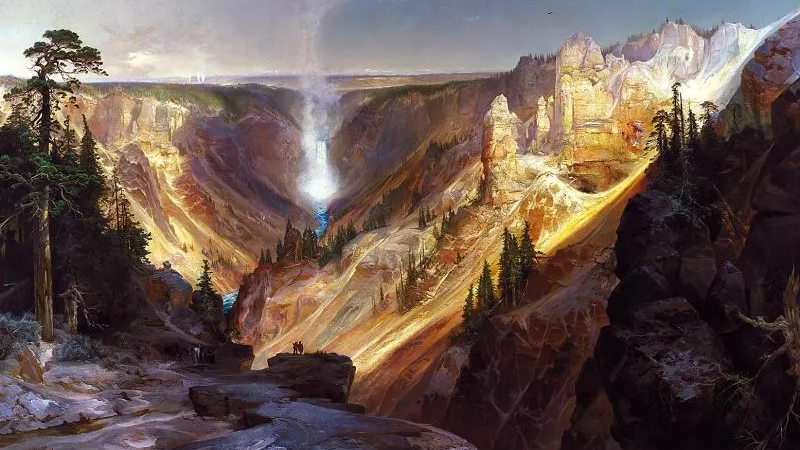
Editor’s Note: George Black is a writer in New York and the author of seven books including Empire of Shadows: The Epic Story of Yellowstone, from which he adapted this essay.
Nathaniel Pitt Langford left Helena a day ahead of the rest of the party. There were two important if unpleasant pieces of business to take care of before his unlikely group of explorers set off for the upper Yellowstone. He had chafed for five years to reveal the truth about this most inaccessible corner of the frontier, to settle once and for all the swirl of rumors about its hallucinatory wonders. Another day would not matter.
Langford was an expert horseman who had ridden alone for thousands of miles across the forbidding landscapes of Montana Territory with a shotgun strapped to his saddle, and he made a formidable impression. He was a handsome man of thirty-eight, with a black beard so dense that birds might have nested in it; a high forehead; a downturned mouth; and an intense, blazing stare. Most of the extant photographs capture his fierce charisma, though they also suggest an absence of humor, the self-righteousness of a man with strong and fixed ideas, and a taste for melodrama.
It was mid-August of 1870, but in one of those capricious turns in the weather that are so common in the Northern Rockies, Langford was caught in a snowstorm near the Three Forks of the Missouri. He took refuge there in the home of a retired army major among a straggle of cabins that some wishful thinker had called Gallatin City. Steeped in the history of the territory, Langford knew that this was the heart of the old fur-trapping country, where Jim Bridger, the most celebrated of the mountain men, and two generations of trappers had fought the implacable Blackfeet over beaver pelts. Usually, they had come out the worse from these encounters—tomahawked, riddled with arrows, dismembered.
Langford knew from the journals of Lewis and Clark that he was walking in their footsteps. President Jefferson's Corps of Discovery had stopped at the Three Forks for two days in July 1805, and it had been one of the most discouraging junctures in their two-year journey. Despite the help of their sixteen-year-old Shoshone guide, Sacagawea, they had failed to make contact with her tribe. The girl was carrying a six-month-old baby and was barely recovered from a life-threatening illness that Lewis had treated with laudanum and saltpeter. Clark was in wretched shape, his feet torn to bleeding shreds from days of tramping over prickly pear and needlegrass. Yet Lewis reveled in the glory of the landscape, the "extensive and beautiful plains and meadows which appear to be surrounded in every direction with distant and lofty mountains."
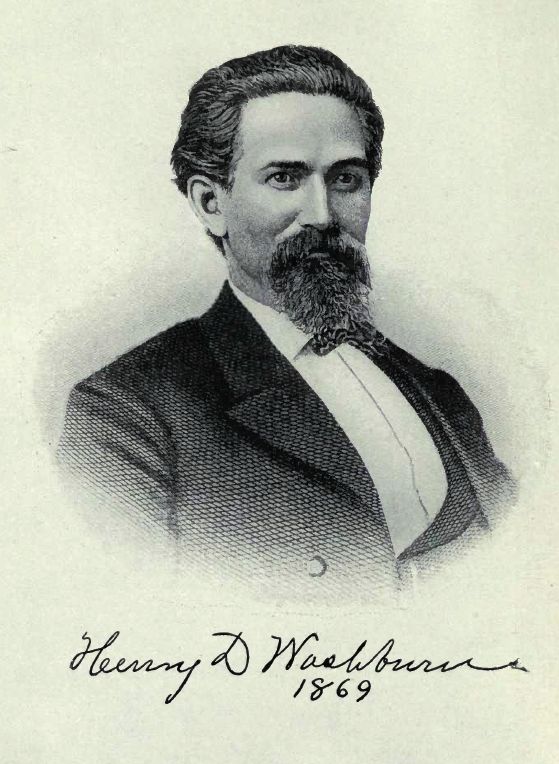
From their source among the unexplored snow peaks of the upper Yellowstone, the forks of the Missouri River meandered northward across the broad, lush valley. Lewis named them for the leaders of the young country: Secretary of State James Madison, Treasury Secretary Albert Gallatin, and "that illustrious personage, Thomas Jefferson, President of the United States." Later, as the expedition made its way south, Lewis, a Royal Arch Mason, would name three of the Jefferson's tributary streams to honor the president's virtues and the values of freemasonry—Philanthropy, Philosophy, and Wisdom.
On his second morning out of Helena, when the storm had abated, Langford set out for Fort Ellis, two miles east of the small town of Bozeman and the starting point for the Yellowstone expedition. But he had to deal first with the unhappy situation at the local masonic lodge. Like so many of the leading men of Montana, Langford was a dedicated mason, creator of the first lodge in the territory, and proud to trace his lineage back to Meriwether Lewis. The masonic community in Bozeman, however, was riven by internal dissension, and Langford saw no alternative but to order the town's lodge closed until some amicable solution could be found.
Next day, two lieutenants from the Second Cavalry accompanied him to the fort. In his diary, Langford names one of them as Bachelor, though this was almost certainly James Batchelder, who would play a small but significant part in the events that followed. The commanding officer, Brevet-Lieutenant Colonel Eugene M. Baker, was waiting to meet Langford to discuss the contentious matter of a military escort. Langford's diary says nothing of his feelings about Baker, but the colonel was not an easy man to like. He was a harsh disciplinarian, a notorious alcoholic, and behind his back, men called him "Piegan Baker" for his slaughter of 173 members of the Blackfeet tribe on the Marias River seven months earlier, when his troops attacked the camp of a friendly chief, mistakenly believing that it housed those responsible for the murder of a white settler. But Baker was a favorite of "Little Phil" Sheridan, the Civil War hero who now commanded the Division of the Missouri. And the army, all the way up to its commander in chief, William Tecumseh Sherman, had stood firm behind Baker in the face of the storm of condemnation of the massacre by Eastern humanitarians.
Although the colonel's superiors had spoken at first of providing a whole company of cavalry, he bluntly informed Langford that he could spare only six men for the expedition—a lieutenant, a sergeant, and four enlisted men. But Baker was prepared to assign the best of his officers to lead the escort, a hero of the Piegan campaign named Gustavus Cheyney Doane, who had dreamed since his college days of becoming America's greatest explorer. At thirty, Cheyney Doane—he abhorred the name Gustavus—was an imposing if inelegant figure. The tallest officer at the post, he wore his black hair to the shoulders and sported a drooping walrus mustache that was spectacular, even by the standards of the time. Socially awkward among his fellow officers, Doane was endlessly attentive to his men, who would follow him blindly through any privation. But he was also a man with a respectable degree of book learning and a solid grounding in the natural sciences.
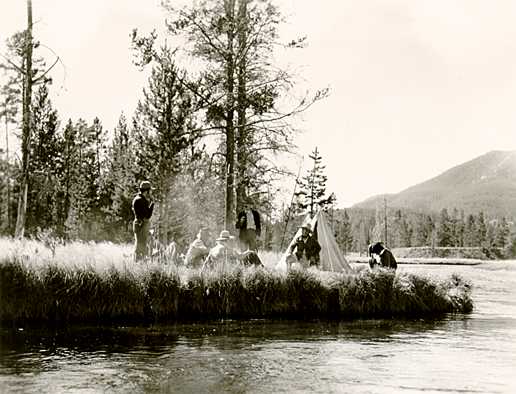
Langford had now taken care of all the practical arrangements for the expedition, but protocol demanded that he wait until the following day, August 21, when its titular head, General Henry Dana Washburn, would arrive with the rest of the party and formalize the agreement with Colonel Baker. Washburn had distinguished himself in the late war, breveted as a brigadier general under Phil Sheridan in the pitiless Shenandoah Campaign. He was a man of fine judgment and impeccable reputation, a diplomat, a skilled manager of tangling egos and flaring tempers. But the war had left him consumptive, and his recent appointment as surveyor general of Montana was seen by some as an invalid posting. As the exploration progressed, his stamina would become a source of anxiety to the rest of the party.
There were nineteen of them in all: nine of the leading men of Montana Territory, Lieutenant Doane's six-man escort, two packers, two cooks—"unbleached Americans of African descent"—and a black dog of apparently limited intelligence named Booby. Though it was officially the Washburn Expedition, everyone recognized that Langford and Doane were its de facto leaders—Doane its pathfinder, and Langford its organizing dynamo, promoter, and publicist. Though they were unaware of it, the two men's paths had been converging for years. Now they had become entwined, first through a murder, then through a massacre, and at last, with their meeting at Fort Ellis, through their shared hunger for exploration, discovery, and fame.
On August 29, the eighth day out, the explorers had their first whiff of sulfur. It emanated from some bubbling springs at the mouth of a creek that plunged into the turquoise waters of the Yellowstone, through a chasm edged with "spires, pinnacles, towers, and many other capricious objects." There, they pitched camp for the night. The weather continued to display all the vagaries of the late summer season in the mountains: The snowstorm at the Three Forks had given way to ninety-two-degree sunshine at Fort Ellis, and then a soaking downpour at the Bottler brothers' ranch, the last rough outpost of civilization. Now, a bitterly cold night had frozen the water in their buckets.
But their spirits had risen after the unsettling portents of the first few days. A bout of food poisoning had kept one man confined to his tent at the Bottlers' ranch. Perhaps a surfeit of corn and wild berries was to blame. Or maybe it was the canned peaches, a particular delicacy. There was a nervousness about hostiles, warnings from other frontiersmen that some of the party were likely to lose their hair. Two hunters encountered on the trail told of finding the bleached skeletons and severed heads of two miners who’d been killed two years earlier.
While the sick man lay sweating in his blankets, a band of a hundred Indians had watched the party from a high bluff across the river. To Langford, especially, they had a menacing aspect. "For me to say that I am not in hourly dread of the Indians when they appear in a large force, would be a braggart boast," he wrote in his diary. He was grateful for the party's rifles, which were accurate at long range, and for their plentiful supply of ammunition. But Lieutenant Doane, with wide experience in such matters, appeared unconcerned. The horsemen on the bluff were friendly Crows, he said, not the fearsome Blackfeet from the north, nor the Shoshone (both tribes cowed now by force of arms), nor the Sioux, who, despite repeated alarums, had never been known to venture this far to the west, into the valley of the upper Yellowstone. The Crows, as Langford surely knew, were more prone to horse theft than murder.
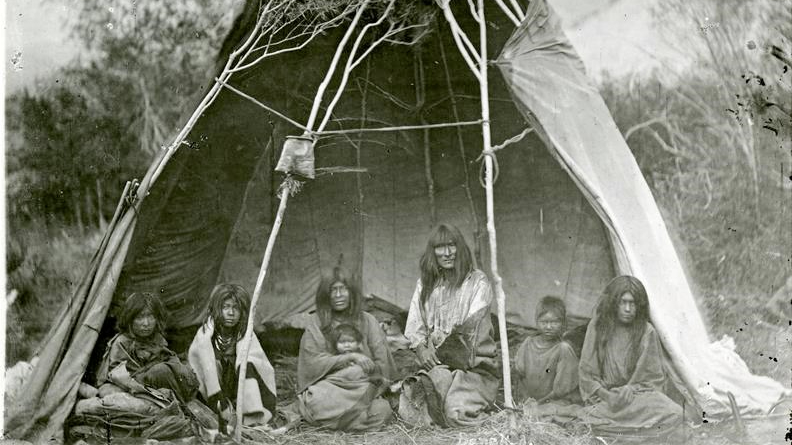
Not that Langford himself was any stranger to violence. He had always seen himself as one of that elite of educated and ambitious men who would bring civilization to the frontier—and the frontier did not civilize easily. Tribes like the Blackfeet and the Sioux, who had ranged freely for centuries across their ancestral buffalo lands, were the most obvious impediment. But there were other obstacles, too, as men such as Langford sought to build the institutions of law and order. Their methods were peremptory; in the absence of government authority in the Montana gold camps, where Langford had come to seek his fortune, those who disrupted the new civic order with robbery and murder were likely to find themselves hanging from the nearest tree. The Montana goldfields gave birth to the largest episode of vigilante violence in American history, and Langford was one of those who led it.
With Doane invariably riding first, the explorers had found much to write about in the days since leaving Fort Ellis. They marveled at a singular formation of red rock that they mistook for cinnabar and named "the Devil's Slide;" they picked their way across a bleak, boulder-strewn stretch of country that one member of the party called "the Valley of Desolation;" fighting vertigo, they peered down into three successive canyons, each more unfathomable than the last; and now they had stumbled upon this group of malodorous sulfur springs.
Langford and Doane kept the most detailed diaries, although most of their companions made notes of their own. Some would publish newspaper and magazine accounts of the expedition, while the jottings of others are best described as perfunctory. Langford's business partner, Samuel Hauser, though a successful Helena banker and future governor of Montana after the territory became a state, seemed scarcely literate. Each day, he scrawled a few misspelled words with a dull pencil. Contemplating the snowcapped spectacle of the Absaroka mountains, where the two unfortunate prospectors had been killed, he managed just this: "scenery supurb."
The camp above the sulfur springs was at 6,500 feet, but the mountain they proposed to climb today towered more than 3,000 feet higher. They broke camp at eight o'clock, though not all of them joined the trip. Among the three who stayed behind was a bright and self-effacing young Helena lawyer named Cornelius Hedges, a close friend of Langford's and another prominent mason. He was an improbable explorer, slightly built and something of a hypochondriac. Let the others make the ride up the mountain, Hedges said; his horse was tired, and he would climb instead to the top of a beetling cliff that overlooked the campsite to savor the view of the Yellowstone and update his journal.
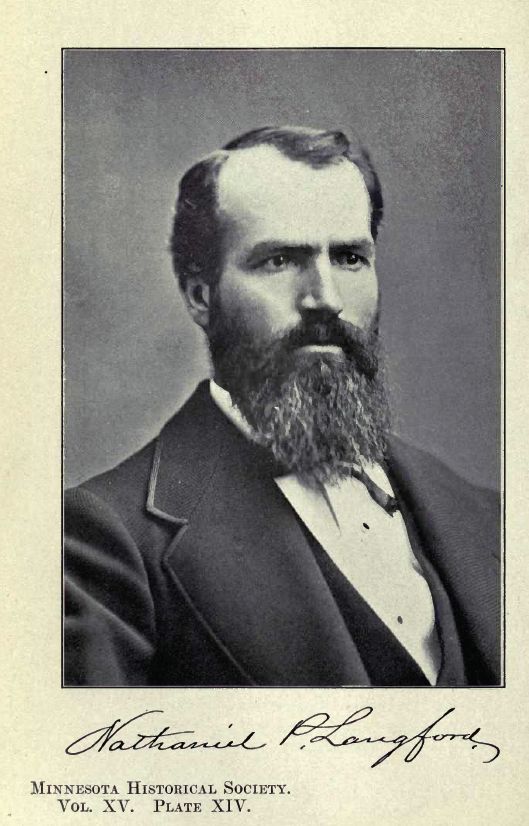
At the foot of the mountain, the riders diverged from the Indian trail that Lieutenant Doane had been following for the past several days. The ascent from here was steep and rough, through stands of timber, across meadows of late-blooming wildflowers where grizzly bears began to forage at this time of year for berries and whitebark pine nuts, and then over bare rocks and ravines, past the tree line and the snow line. At the summit, they took measurements with an aneroid barometer, although the numbers varied widely. Perhaps not all the members of the party were familiar with the workings of the instrument. Hauser, a former civil engineer with a talent for triangulation, estimated their altitude at 10,700 feet. Less, Langford said: about 9,800. Doane fixed the figure at 9,966 feet. While there was disagreement about the altitude, there was no dispute about the name. They dedicated the mountain to their ailing general, who had surprised them all by riding alone to the summit on the previous day. It would be Mount Washburn.
"The view from the summit is beyond all description," Doane wrote. His whole field of vision was rimmed by mountains: to the east, the dark, white-tipped mass of the Absarokas; to the west, the forested slopes and chiseled rock faces of the Madison and Gallatin ranges; straight ahead to the south, the sheer-sided silhouette of the distant Tetons. A pellucid lake, dotted with islands, occupied the middle ground.
The Grand Canyon of the Yellowstone cut a ragged line across the open landscape, and twenty miles beyond it, a column of smoke rose hundreds of feet above the trees. They took it for a forest fire, not an uncommon occurrence after summer lightning strikes, until someone remarked that the smoke seemed to be rising in regular puffs, as if it was being expelled from the earth with great force. As they concentrated on this sight, their senses sharpened in the cold, thin air. They convinced themselves that the smoke was also making a sound, a low roar—although, at such a distance, this might have been an aural illusion. The meaning of the curious sight began to dawn on them. A cheer went up; hats were thrown in the air. They had found a geyser.
As Doane took in the view, he became aware of other plumes of white, more and more of them. Some appeared in a sudden spurt of steam; others formed lazy, drifting clouds. He was looking, astonished, at dozens of geysers and hot springs, scattered all across the great circular basin. The scene put him in mind of the Alleghenies, with the iron and coal furnaces going full blast. While the others took their measurements and raised their hurrahs, Doane alone seemed to understand the totality of what he was seeing. All of this was the vast crater, the caldera, of an extinct volcano. And that meant that everything they had heard—the campfire yarns spun by Jim Bridger and the mountain men, the wild exaggerations of the gold prospectors, the tales told by the Jesuit fathers of their travels with the Blackfeet to a place they called the "land of many smokes"—all of it was true.
Over the days that followed, Doane dutifully recorded the explorers' progress in his journal, covering page after page in his bold, sloping hand. It was the first coherent record of the sights that tens of millions would eventually flock to see—the canyons and falls of the Yellowstone, the shimmering lake, the mud pots and geyser basins. Doane's report was a masterpiece of crisp, clear observation. Before the next year was out, it would be favorably compared to the journals of Lewis and Clark; within two, it would be instrumental in the creation of one of the nation's greatest icons.
On March 1, 1872, President Ulysses S. Grant signed the Senate bill setting aside “a certain tract of land lying near the head-waters of the Yellowstone River” as the nation’s first national park. It was an idea whose time had come, part of an emergent national identity in the aftermath of the Civil War. The upper Yellowstone was a display case of all that was wildest, strangest, and most exotic about the newly conquered West, a gallery of wonders—but one that could easily be lost to “hucksters and speculators,” Nathaniel Langford wrote, if the government did not step in to protect it.
At the same time of Grant's signing, the army was at work on its official history of the Second Cavalry. It traced each proud episode, from hunting down the Seminoles in the Everglades in the late 1830s, through the heroic fights against the Confederacy at Bull Run and Manassas, to the Piegan affair of 1870, in which the central role of Lieutenant Doane in destroying the hostile village on the Marias was singled out for special praise.
The history was written by an elite group of colonels and generals, but, remarkably, they asked Doane, a mere lieutenant, to contribute a chapter of his own on the Yellowstone expedition. The drive to explore and to “civilize,” and the willingness to use violence in pursuit of these goals, were to be woven together in the army's salute to this young officer, as they were in the history of the West. Doane wrote with pride:
“It is something to break down the barriers of the unknown; to behold the mists of darkness fade; to marshal the videttes of the vanguard of progress; to form the crest of that wave of civilization which sweeps on-ward, invincible and without ceasing, through the breadth of a great continent, until it meets the reflux tide from the broad Pacific slopes.”
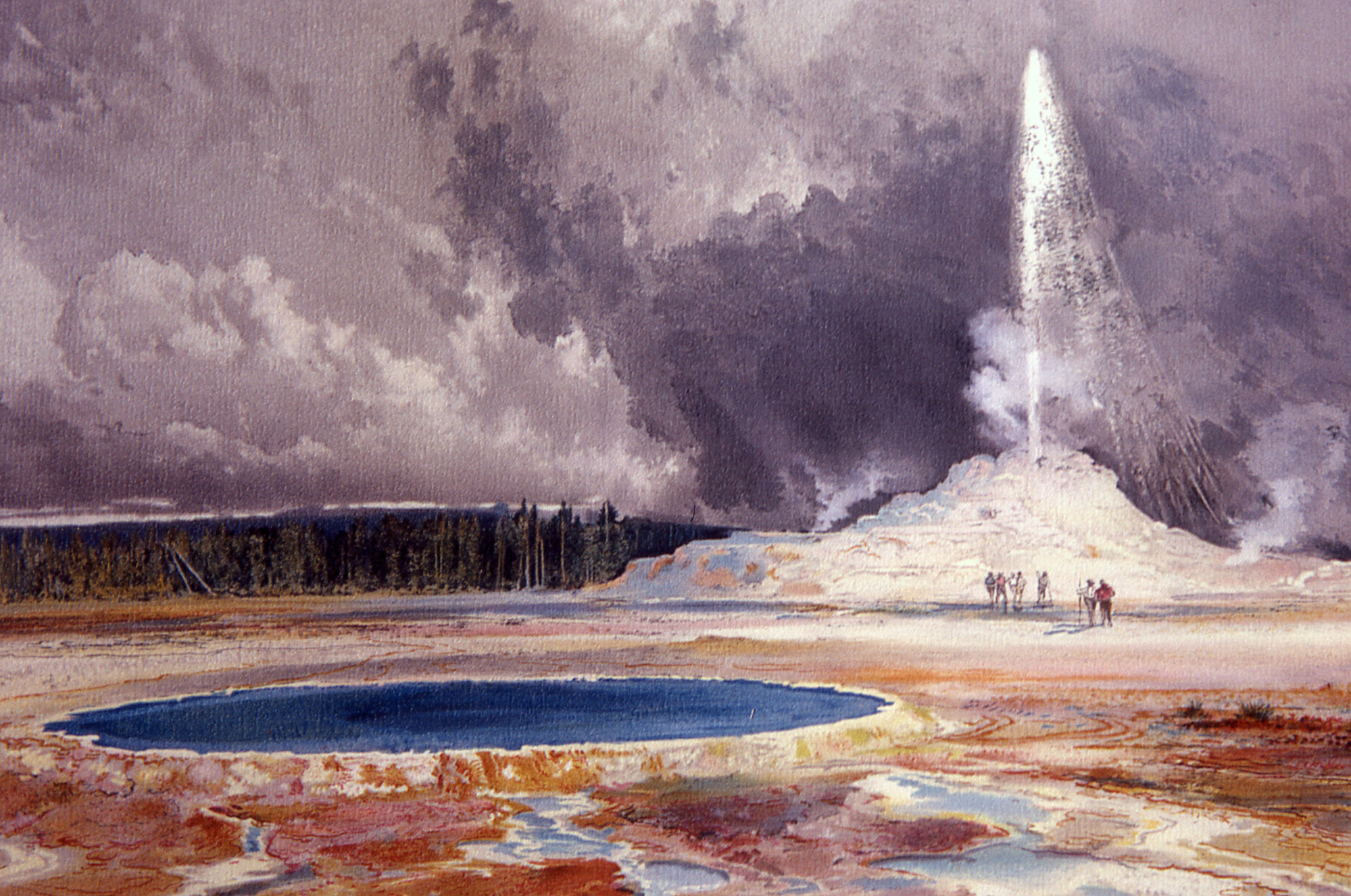
Regarding Yellowstone, he had this to say:
“When the park shall have been made accessible to the pleasure-seekers of the world, it will be a satisfaction not to be derived from wealth nor honors to have been in some degree concerned in the discovery and development of a new source of pleasure and instruction for the human race.”
This was an official history, and, as such, it called for decorum. But in the normal run of things, this kind of modesty was not a quality that marked the lieutenant's character. In his own mind, Doane was not merely "in some degree concerned" in the creation of Yellowstone as a national park. He would always be "the man who invented Wonderland."
When it came to claiming credit for the idea, success, as always, had many fathers. The self-promoting geologist Ferdinand Hayden, who led his own expedition to Yellowstone in 1871, boasted that, “It is now acknowledged all over the civilized world that the existence of the National Park, by law, is due solely to my exertions.” Baloney, said Montana territorial delegate William Clagett. “So far as my personal knowledge goes,” he wrote, “the first idea of making it a public park occurred to myself.” He and Langford, he said, “probably did two-thirds, if not three-fourths, of all the work connected with the bill’s passage.” Other contemporary sources attributed the idea to Montana governor Thomas Meagher, and Langford himself initially gave credit to the Quaker schoolteacher David Folsom, who had traveled out to Montana with him in 1862. The railroad baron Jay Cooke of the Northern Pacific also promoted the idea heavily, with Langford doing enthusiastic PR for him, seeing the railroad as the key to Montana’s future prosperity.
Many years later, Langford published a florid account of a discussion around a campfire at the junction of the Firehole and Madison rivers on the 1870 party’s last evening in the geyser basin, in which the idea of a national park met with general acclaim. Langford’s campfire story crystallized into the official creation myth of Yellowstone, purveyed to tourists for decades, until it was called into question in the 1960s by the distinguished park historian Aubrey Haines. Since then, historians have generally agreed that the true author of the plan was Cornelius Hedges.
A more modest man than Langford, Hedges would describe himself later as “one who claims the honor of having first proposed constituting this region of wonders into a National Park,” and Langford himself appeared to put the final seal on the debate when he sent Hedges copies of his own published diary of the expedition in 1905. “Take them with my love,” he wrote, “for no man is more entitled to them than you, who first proposed the creation of the Park.”

